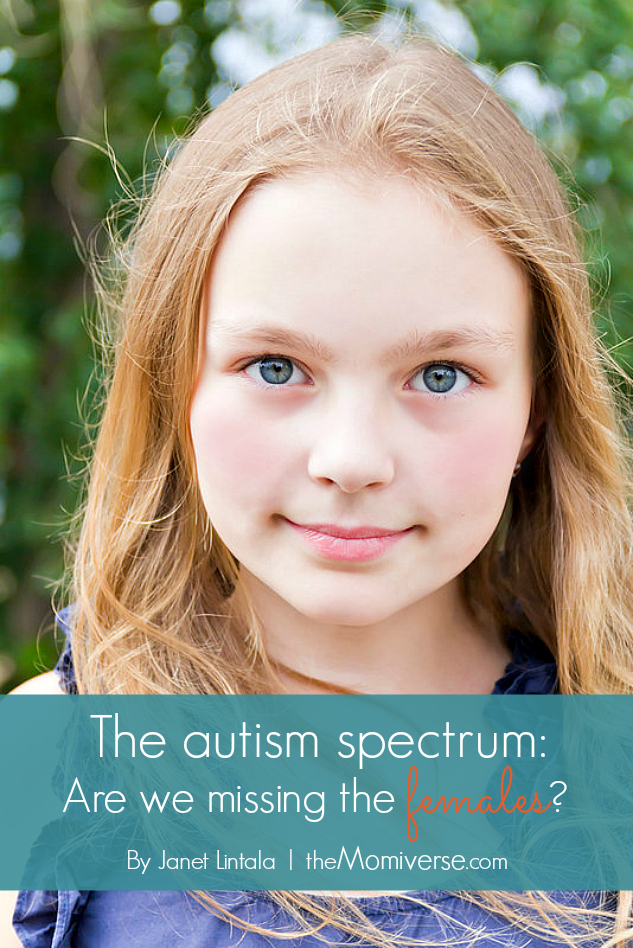You sometimes think you want to disappear, but all you really want is to be found.
~ Kid Cudi
Can we find something we’re not looking for?
Here’s your assignment:
Sort through a large diverse group of birds and find all the peafowl. You are instructed to select the ones with vivid, iridescent plumage in blues and greens, with extravagant tails that open into huge shimmering fans.
Oh, you’re thinking, I’m looking for peacocks. Problem is, peacocks are the male peafowls. How can you find the plain, gray peahens if you’re looking for birds that would rival a glittering Las Vegas dance revue?
Why are we missing the females?
It starts at the doctor’s office. Autism parents report that doctors are more dismissive when they ask if their daughters could be autistic. Instead of screening them for autism spectrum conditions, doctors may offer other diagnoses such as ADHD, Obsessive Compulsive disorder, or even eating disorders.
The females just don’t seem to match the description of autism. It may be because girls have commonly been excluded from autism studies, and some researchers feel there may be a bias in the diagnostic criteria.
“Everything we thought was true of autism seems to only be true for boys.”
~ Kevin Pelphrey, leading autism researcher
How are girls different?
The brains of autistic girls are different from those of autistic boys:
- Better imagination
- Better linguistic abilities
- Less overall social impairment, more on the level of typically developing boys of the same age
- Better social imitation skills
- Increased desire to be more social with others and connect
- Fewer repetitive behaviors such as lining up, stacking and sorting
- Areas of over focus are more socially acceptable, for example, their interests are often in nature or animals, literature, fashion, make-up. (It’s the intensity of the focus that is different)
- Can be hypersensitive and emotional in childhood
- Superior fine motor skills
- Quieter and less disruptive in school, fly under the radar
Common myths
I’ve been an autism mom over 20 years, and I’ve heard both of these myths throughout that time:
Autism myth #1: Autism is far less common in girls – Boys are typically thought to outnumber girls on the spectrum by 4 or 5 to 1, and even 8 to 1 on the higher functioning end of the spectrum.
If gender-based diagnostic criteria are developed, the actual ratio may be closer to 2 to 1.
Autism myth #2: Autism is more severe in girls.
Or is it just because our diagnostic criteria find the peacock girls, the ones who present more like boys?
Blending in
Because girls and adult females receive their diagnoses much later, if at all, they miss out on support and services, and must find ways to cope on their own. Here are some of their different coping strategies:
- Observation
- Imitation
- Camouflage
- Masking
- They may use their intelligence to “McGyver” their way through tricky social situations
- Apologize and appease
- The first impression of an autistic girl may be that she socializes pretty well, but further interaction reveals these may be surface skills and are not more deeply developed
It can be exhausting to pull off these strategies, and may result in a meltdown once the girls are off-stage, or there may be a strong need for quiet time to recharge.
Why should we screen differently?
It’s not because we have to obsessively sort and label everyone. These girls and adult females are missing out on vital supports and therapies, not to mention how much it would help in self-understanding. Some females report they always knew they were different, but just assumed they were weird or, worse yet, stupid.
The autism spectrum often comes with a host of invisible health challenges which, unaddressed, can affect health and function. The spectrum also has higher rates of anxiety and depression, which can contribute to suicidal thoughts and behaviors. Social isolation, bullying, lack of meaningful employment, and low self-esteem can contribute to secondary depression.
Access to early and appropriate support and understanding is crucial to minimize these problems.
It’s time
The need for gender-based screening and diagnosis is real, but is anyone working on developing new criteria? A quick Internet search didn’t reveal much other than that autism expert Dr. Tony Attwood is developing something called the GQ-ASC – The Girls Questionnaire for Autism Spectrum Conditions.
Even subtle difficulties on the autism spectrum can have a significant impact on life, success, and happiness. Girls and adult females should be able to blossom and have a better life on the autism spectrum. Gender-based screening and diagnosis for autism spectrum conditions is an idea whose time has come.
© 2016 Janet Lintala, author of The Un-Prescription for Autism: A Natural Approach for a Calmer, Happier, and More Focused Child







{ 1 comment }
Thank you for this post. I’m evaluating four girls right now to get them the school (and home) services they need.